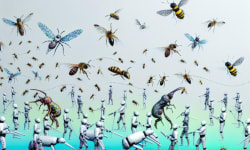Harnessing Collective Intelligence: Insights from Animal Groups to Swarm Robotics
Recent technological breakthroughs are revolutionizing the intersection of collective animal behavior and robotics. By studying how animals like ants, birds, and fish coordinate through simple local interactions, researchers are uncovering the fundamental principles that drive effective group behavior. These insights are now being applied to the design of swarm robotic systems, which aim to replicate the resilience, adaptability, and scalability found in nature.
Collective intelligence emerges when individuals follow basic rules and interact locally, leading to complex group-level outcomes without centralized control. In animal groups, this enables rapid decision-making, efficient resource allocation, and robust responses to environmental changes. For example, ant colonies can dynamically adjust their foraging strategies, while bird flocks and fish schools demonstrate remarkable coordination to avoid predators or navigate obstacles.
Engineered robotic swarms are now leveraging these biological principles to achieve similar feats. By programming robots with simple behavioral rules and enabling local communication, researchers are creating systems that can self-organize, adapt to new challenges, and recover from individual failures. Such swarms have promising applications in environmental monitoring, search and rescue, agriculture, and more.
However, designing robotic collectives that match the robustness and flexibility of natural systems remains a significant challenge. Key research areas include developing algorithms that ensure reliable group behavior, enabling real-time adaptation to dynamic environments, and scaling up from small groups to large, heterogeneous swarms.
By bridging the gap between biology and engineering, the study of collective intelligence is paving the way for next-generation autonomous systems. As our understanding deepens, we can expect to see increasingly capable robotic swarms that transform industries and address complex societal challenges. Read the source »






